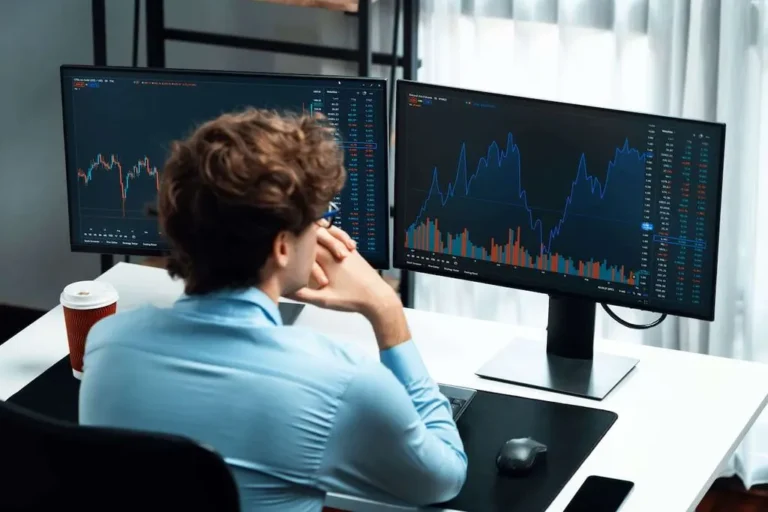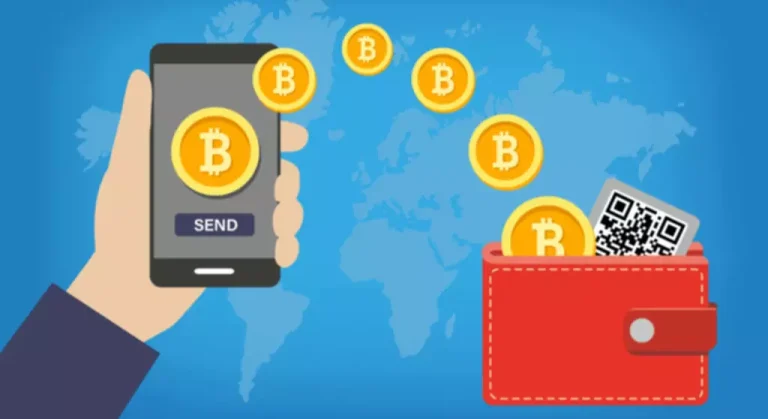Content
The ease of trading ETFs gives investors more control over when and how they trade. This liquidity feature is one of the key benefits of owning ETFs, particularly when compared to mutual funds. Non-fungible token Bids and offers are posted throughout the trading day, which means you can buy or sell whenever the market is open, and you can also track the value of your ETF investment down to the penny. ETPs are market-linked products and, just like any stock, can increase or decrease in price.
Why is the market price sometimes different from the net asset value (NAV) of an ETF?
Commission-free trading of stocks, ETFs and their options refers to $0 commissions for Robinhood Financial self-directed brokerage accounts that trade U.S. listed securities and certain OTC securities electronically. Keep in mind, other fees such as trading (regulatory/exchange) fees, wire transfer fees, and paper statement fees may apply to your brokerage account. Please see Robinhood Financial’s Fee Schedule to learn more regarding brokerage transactions. Please see Robinhood Derivative’s Fee Schedule etp vs etf to learn more about commissions on futures transactions.
Historical High: ETF Flows Break $1 Trillion
While ETFs disclose holdings daily, that typically happens monthly or quarterly with mutual funds. 6Commission-free trading of Vanguard ETFs applies to trades placed online; most clients will pay a commission to buy or sell Vanguard ETFs by phone. Commission-free trading of non-Vanguard ETFs applies only to trades placed online; https://www.xcritical.com/ most clients will pay a commission to buy or sell non-Vanguard ETFs by phone. Vanguard Brokerage reserves the right to change the non-Vanguard ETFs included in these offers at any time.

Can I buy ETFs from other companies through Vanguard?
Credit risk refers to the possibility that the debt issuer will not be able to make principal and interest payments. Our ETFs and index capabilities provide hundreds of choices so investors can assemble their own portfolio playbooks. After setting goals and comparing ETFs, go deeper to learn more about how each ETF measures up on key metrics, including performance, risk, cost, and core holdings. This information should not be relied upon as research, investment advice, or a recommendation regarding any products, strategies, or any security in particular. This material is strictly for illustrative, educational, or informational purposes and is subject to change.
- Mutual funds have long provided investors with an easy way to quickly and cheaply create diversified investment portfolios.
- Transactions in shares of ETFs may result in brokerage commissions and may generate tax consequences.
- The two products also have different management structures (typically active for mutual funds, passive for ETFs, though actively managed ETFs do exist).
- Including new incentives to encourage participation in less active and new ETFs.
Most Popular ETFs for Investors
The cash value of the stock rewards may not be withdrawn for 30 days after the reward is claimed. In addition, ETF managers can use capital losses to offset capital gains within the fund, further reducing (or possibly eliminating) the taxable capital gains that get passed on to fund shareholders at the end of each year. Because ETFs have the same trading flexibility as stocks, short-term traders can use ETFs to quickly move in and out of a position. But ETFs are also a cost-efficient way to build a long-term, core portfolio. An exchange-traded fund (ETF) is a collection of assets that trades on an exchange.

An ETF is made up of several diversified “building blocks” such as stocks, bonds or commodities. An individual block can represent a company (Apple) or country (Mexico), but together they form an industry (technology) or a continent (Latin America). An ETF, or Exchange traded fund, is a group of diverse assets that trades on a stock exchange as a unit. ETFs listed on Bursa Malaysia offers you a wide range of geographical and asset class exposure from US to China and ASEAN, and from stocks to bonds and gold. Access a tailored set of pricing and analytics, indices and exchange data in a secure, flexible fashion. ICE Data Services covers a broad range of asset classes to help you address your investing, trading, compliance and risk management requirements.
Since there is relatively little active fund management involved in ETFs, expenses and fees for investors are often lower than for mutual funds that entail extensive fund management. The diversity of assets in the portfolio of an ETF portfolio and the relatively small amount of capital that first-time investors need to get started make ETFs an attractive investment vehicle. An exchange-traded index fund (ETF) is similar to a mutual fund, except that it is passively managed. An ETF includes a large collection of securities and often directly replicates the performance of an underlying index. ETFs offer individual investors easy and convenient access to entering the market. This may obviously also be a disadvantage, as it can never (significantly) outperform the index.
Please note that you are required to read and accept the terms of our Privacy Policy before you are able to access our websites. If you are uncertain as to whether you can be classified as an institutional, professional or qualified investor under the applicable rules of your jurisdiction of residence, then you should seek independent advice. Yes, i-ETFs that tracks only benchmark index where the index constituents are Shariah-compliant securities. The index constituents shall undergo a comprehensive Shariah screening exercise before it can be qualified as part of the Benchmark Index for the i-ETF. Get access to key industry statistics through the ETF Logic platform. Whether you are a new or existing issuer we are here to work with you.
ETFs provide access to markets across the globe, ranging from specific countries to an asset class like global bonds – and even commodities like gold. Investing in difficult-to-access markets such as emerging markets becomes much more straight forward by investing in ETFs. Consider a basketball team, made up of key players like a point guard, shooting guard, power forward, small forward and center. Similarly, an ETF is like a “team” made up of diversified “players” like stocks, bonds and commodities that tracks against the “goal” of matching its performance to an index, such as the S&P 500. In doing so, it potentially provides more predictable returns than other investment choices.
BlackRock has not examined any of third-party websites and does not assume any responsibility for the contents of such websites nor the services, products or items offered through such websites. The funds described in the following pages can be marketed in certain jurisdictions only. It is your responsibility to be aware of the applicable laws and regulations of your country of residence. Further information is available in the relevant fund’s offering documents. Quite simply, an ETF combines the features of a unit trust and a stock, offering you the best of both worlds.
Understanding how ETF shares are created and redeemed is key to understanding how these products can add value in a portfolio. Because so many ETFs track indexes, understanding their index tracking or tracking error is also critical. Investors should also understand how to assess an ETF’s trading costs, including differences between the ETF’s market price and the fair value of its portfolio holdings. Or it might track an industry like biotechnology by containing stocks from a range of companies within that sector. ETFs pool together the money of many investors to invest in a basket of securities that can include stocks, bonds and commodities. When you invest in one ETF, you’re exposed to all the underlying securities held by that fund (which can be hundreds).
Because most ETFs are passively managed, ETF expense ratios are typically pretty low compared with other types of funds. An ETN differs from an ETF in that it does not actually own the underlying assets — instead, it’s a debt security that tracks the value of its underlying assets indirectly. What that means in practice is that an ETN’s value relies on its issuer’s creditworthiness — and the risk of an issuer default is worth considering when looking at ETNs.
Persons outside the United States within the meaning of Regulation S under the U.S. In particular, any UCITS funds mentioned herein are not available to investors in the U.S. and this material cannot be construed as an offer of any UCITS fund to any investor in the U.S. Diversification is one of the key ways in doing so, by spreading investments across different sectors, geographies and asset classes. If one sector or asset is not performing well, other investments can balance out any potential loss. When building an investment portfolio, it is important to consider the impact of risk. Index performance does not reflect any management fees, transaction costs or expenses.
This information is confidential, and is not to be reproduced or distributed to third parties as this is NOT a public offering of securities in Costa Rica. The product being offered is not intended for the Costa Rican public or market and neither is registered or will be registered before the SUGEVAL, nor can be traded in the secondary market. If any recipient of this documentation receives this document in El Salvador, such recipient acknowledges that the same has been delivered upon his request and instructions, and on a private placement basis. ETFs are easily traded on the stock exchange and are bought and sold throughout the trading day. This means the price of an ETF share can fluctuate above or below its net asset value based on supply and demand — just like a stock. Many ETFs also pay dividends, but these payments are not guaranteed.
